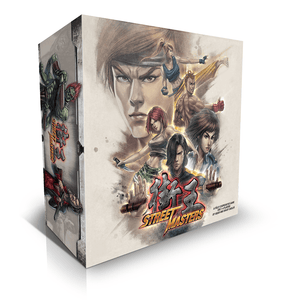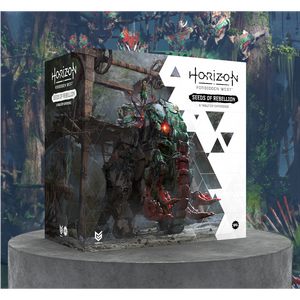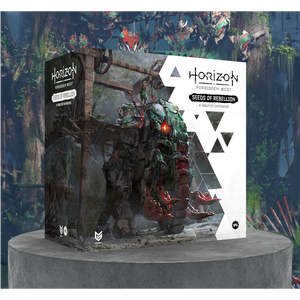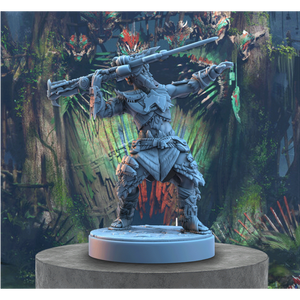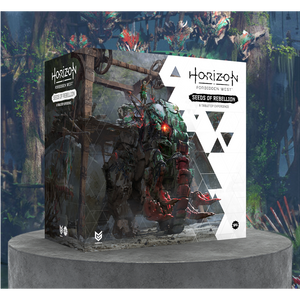Welcome back to the third issue of Creature Chronicles, my (that is: Dylan, Steamforged Games’ Copywriter’s) blog series exploring how much-loved roleplaying monsters made the journey from folklore, literature, and popular culture to your tabletop!
(And I’m Rich August; SFG’s lead RPG designer and writer, here to chime in with stupid comments now and again!)
Now that we’ve pored over the colourful histories of the hydra and orc, it’s time we turn our attention to one of our newer releases: the dragon turtle.
(And yes, I am basing this series on our range of out-of-the-box RPG one-shots, Epic Encounters… I’m a copywriter! Of course I’m promoting something.)
Diving into the Dragon Turtle
Unlike the orc and hydra, the dragon turtle is seemingly most known for its roleplaying iteration. Or at least that’s what Google would have you believe.
But did this mythical reptile come into existence at the same time as RPGs? (Well, no... Otherwise I wouldn’t be writing this blog.)
Dragon turtles actually predate roleplaying games (modern roleplaying games, that is) by nearly two millennia.

Yes, like many mythical beasts, the dragon turtle was born in ancient China.
This era also saw the birth of feng shui. (And no, it wasn’t a several-thousand-year-old furniture-arranging cult.) Feng shui held that individuals could use and shape naturally occurring energy forces, known as Qi, to harmonise them with their environment. Organising your life and home around ‘good’ Qi would lead to prosperity, happiness, and a long life.
And animals had a big part to play in that. According to feng shui (NOT the legendary kung-fu action RPG written by Robin Laws, just to be clear - Ed.), various beasts – both real and imagined – embodied certain beneficial qualities. To channel these qualities, these animals would often be depicted in paintings, statues, and other decorative objects.
So, with various animals representing their own unique qualities, the fusion of two animals could offer a particularly potent mix of said attributes.
The Four Celestial Animals
And, as far as the dragon turtle’s concerned, it’s not composed of just any two animals. They make up half an elite group: the Four Celestial Animals. These powerful mythological beings – also known as the Four Guardians, Four Gods, or Four Auspicious Beasts (all of whom deserve their own epic encounters… What an amazing series to write! - Ed.) – each constitute one of the four cardinal directions, alongside other important aspects.
- The Green (or Azure) Dragon, guardian of East, represents luck, spring, and wood.
- The Red Phoenix (or Vermillion Bird), guardian of South, represents opportunity, summer, and fire.
- The White Tiger, guardian of West, represents protection from harm, autumn, and metal.
- The Black Turtle (or Tortoise), guardian of North, represents longevity, winter, and water.

So, with this heady mix of the dragon and turtle’s various powerful traits – luck and longevity, spring and winter, and wood and water – the dragon turtle was a creature of immense strength and significance for the practice of feng shui.
The Most Famous Dragon Turtle
As well as appearing in statues and decorative items in people’s homes, there was a long-lasting tradition of depicting turtles, or tortoises, propping up commemorative steles or tablets. In fact, this tradition stretches to the modern era, with stele-bearing turtles cropping up to commemorate the victims of World War II.

Bixi, son of the famous Dragon King, was likely the most notable figure to be depicted bearing these tablets. Why is that relevant? Bixi was a dragon turtle. The most famous one, in fact. And, with the head of a dragon and shell of a turtle, Bixi looked remarkably similar to the dragon turtle of roleplaying fame.
The Dragon Turtle in Popular Culture
Despite its important role in Chinese history, it may feel like the dragon turtle’s failed to permeate into popular culture.
That’s true to an extent. But it’s not the whole picture.
I remember chewing the fat with some mates a few months ago, and the conversation, naturally, turned to Mario’s arch-nemesis, Bowser. “What actually is he?” someone asked.

It struck me as odd at the time that such a ubiquitous video game character wasn’t a recognisable animal, but a weird combination of several beasts.
Well, if I’d known then what I do now, he would’ve been recognisable. Because, with his fire-breathing head and large, spiked shell, he’s clearly a dragon turtle!
(See also: Turtonator, the Fire/Dragon Pokémon with a large, armoured carapace.)
The Dragon Turtle in Roleplaying
Well, that about covers my whistle stop tour through the dragon turtle’s history. So, it’s time I hand over to Rich who can talk about its appearance in Epic Encounters and RPGs more widely!
Dragon Turtles in D&D have been with us since the very beginning. They appear in the very first Monster Manual, published in 1977, though the illustration of the beast is very different from the form its now adopted. It has a much longer neck, and, in most senses, looks closer to a classic ‘sea-serpent’ than the gigantic teenage mutant eat-your-face off ninja turtle it resembles today. If you had to tell me what the creature below was intended to be, I’d put (a very small amount of) money on people guessing it was the Loch Ness Monster, or Ogopogo, or similar.

While I adore the original illustration—how could you not? It’s both weird, and ugly, and beautiful, and captures so much of what made early RPGs so intensely interesting.
That’s part of what I wanted to reintroduce into the Dragon Turtle as an opponent. Some of that strangeness has gone missing in more recent editions, as the Dragon Turtle becomes ever more turtle and ever less dragon. Now, obviously, the Epic Encounter Dragon Turtle needs to be recognisably the 5e version of the Dragon Turtle; we want to make your games of D&D, or other fantasy RPGS, more fun and easier to play. But I wanted to bring back some of the strangeness.

One approach was to emphasis the creature’s intelligence. The Dragon Turtle has an Intelligence of 10. It’s as clever as the average human; so how does the intelligence manifest itself? What does it do to the terrain it dwells in? How does it compose its home? Giving the creature more personality is always a great means of differentiating it. Think of each monster in your fantasy games as unique individuals. Yes, maybe there are a thousand Dragon Turtles at the bottom of the sea, but your characters aren’t facing a thousand (unless you’re truly an evil GM). They’re facing this one, lone, Dragon Turtle. So make it unique, make it different.
This is something I’m always attempting to do with Epic Encounters; to give GM’s the tools to make their big boss monsters feel different, to feel tailored to their table, and I think Dragon Turtles don’t warrant the same degree of love or appreciation these days, as they did in 1977. Instead, players and GMs sort of know what they’re intended to do, what they are. The essence of the Dragon Turtle feels circumscribed now, in a way it shouldn’t. We’re always introducing new variants of dragons, for instance. Maybe we should do the same for Dragon Turtles.
I realise this little insight into ‘why I designed the Epic Encounters Dragon Turtle in the way I did’ has become quite philosophical, but well… this is what I think about when I think about monsters. Next time, I promise I’ll touch more on the mechanics. But for now: show your Dragon Turtles some love, people! They deserve it!
Cheers, Richard!
And thanks to you, dear reader, for tuning (scrolling?) into another instalment of Creature Chronicles! That’s the end of our folklore forays for 2022, but we’ll be back in the new year.
Until then, have a good one!
Ready to get the Dragon Turtle into your RPG?
About the Author

|
Hey, I’m Dylan, Copywriter for Steamforged Games. I’ve always been enthralled by words and language, and am a huge gamer (both board and video), so writing about games for a living is pretty much the dream! I’m also big into music, folklore, politics, and have written bits and pieces for TechRaptor and When The Horn Blows over the years. Favourite board game: Catan. Favourite video game: DARK SOULS. |

 Join us on Discord
Join us on Discord


